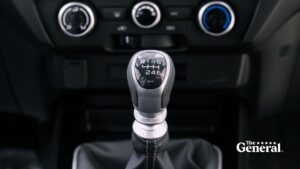Insurtech reducing risk, cost of insuring trucking cargo transportation industry

In insurance for the trucking industry, technology is making new strides into both obtaining coverage and lowering risk.
Insurers can be more precise about levels and value of coverage. Detection and prevention of theft, damage and accidents is also gaining precision through new and improved technology.
Large carriers like Nationwide and newer startups like MiKargo247 are both innovating in how to provide coverage.
Nationwide typically served larger fleets with 500 or more trucks, according to Carole McIntyre, senior director of underwriting, working with the excess and surplus commercial underwriting team at the carrier. McIntyre works with owner-operator truckers who have just one truck or less than 10.
Carole McIntyre, senior director of underwriting at Nationwide
“Being able to customize excess and surplus coverage is a great benefit for small owner-operators,” says McIntyre. “They might all of a sudden have one load that is a little bit different than what they do most days. So we’re able to provide a trip coverage so we can increase the limit or we can specifically call out the type of cargo. Even if they don’t know throughout the year, what they’re going to end up hauling, we can work with them throughout the year to get them the coverage that they need.”
A new insurtech, MiKargo247, is also addressing the issue of excess insurance with one-way spot cargo freight insurance underwritten by Roanoke Insurance Group, a unit of Munich Re. The coverage is aimed at individual owner-operator truckers who need higher coverage limits on a cargo, and property brokers who arrange shipments where shippers require certain levels of coverage, according to Dave Pasco, vice president of sales and product development at Roanoke Insurance Group.

Michele McGinnis, co-founder and CEO of MiKargo247
Common coverage for truck cargo is $100,000, notes Michele McGinnis, co-founder and CEO of MiKargo247. “If truckers want to carry freight that has a higher load value, or a commodity that might be excluded, they’re sent out into the market, looking for more insurance,” she says. This issue has worsened due to the recent rise in inflation, she notes.
“Drivers that didn’t necessarily need additional coverage or a higher value six months ago may need it today. And they weren’t used to having to go look for that. Because the load they’re carrying is now much more valuable and expensive than it was before this market got so inflationary,” says McGinnis.

John Pope, chairman of Cargo Transporters
Although larger carriers can afford to self-insure and weather market fluctuations like inflation, even they hit self-imposed limits, as John Pope, chairman of Cargo Transporters, a Claremont, North Carolina-based company that operates about 500 trucks and 1,800 trailers, explains. “We have carriers then that pick up over and beyond what our self-insurance retention is,” he says.
Besides using new technologies and services to find appropriate cargo coverage, trucking companies are using a variety of sensors to protect freight, both by monitoring cargo and by tracking the position of a shipment.
Cargo Transporters uses telematics to track its trailers. “We are able to determine if the trailer’s moving outside of having our truck attached,” says Pope. His company is upgrading to more advanced camera monitoring of trailer interiors. “We get periodic photos of the inside of the trailer that determines both if the trailer is actually loaded or empty. It gives us a snapshot of the freight that’s loaded on there. It’s not a live view, but we can tell the status of the goods. We can tell how they were loaded by the shipper and if they were secured properly. We use a combination of those tools to manage the location of the trailer as well as the status of the freight that’s there.”
Assistcargo, a trucking cargo risk management and security company based in Miami, operating in the U.S., Mexico and six South American countries, recently partnered with Tive, an in-transit visibility technology company. Together, they are providing trucking company clients with monitoring devices yielding a lot of data in real-time, including light detectors indicating if a trailer door has been opened, according to Jose Luis Anselmi, founder of Assistcargo. Assistcargo operates its own monitoring center using the Tive technology.
“We send the drivers a link and we can monitor in the cell phone of the driver if we want,” he says. “We build a link between the GPS fixed in the truck with the mobile of the driver and the Tive device.”
Using a combination of GPS data and internal monitoring devices, Assistcargo and Tive can track the driver’s rate of speed for safety, and what may be happening to cargo en route, as Anselmi explains.
“We carried out a very interesting experiment with the largest company in Mexico that sells air conditioning equipment. They had a significant rate of damage in the equipment. They didn’t know why or when that happened. Using devices sitting in the cargo, we could see that the main problem was in transit,” he says. “The answer is if the driver stops suddenly, with the G-force, the pieces of cargo press against one another. Using monitoring to control the behavior of the driver, we can reduce the damage dramatically.”
More generally, an average speed of 50 miles per hour might be deemed safe for a particular truck and trailer with certain cargo, but if weather conditions are poor, that speed might need to be lower, which monitoring can document or help enforce, Anselmi explains.
One wrinkle for using GPS monitoring in this fashion, however, depends on the level of cellular technology supporting the GPS functions, as McIntyre of Nationwide notes. Tracking can fail if the GPS technology installed in a truck is still 3G, but all the networks along that truck’s route are now upgraded to 5G.
“The larger units or larger insureds, with over 1,000 [vehicles] are replacing [the 3G] technology,” she says. “Since our insureds are a little bit smaller, the owner-operators, it’s taking time to get that up and running. So we’re having a little bit of difficulty in tracking some trailers currently, but hope to get all of that technology upgraded soon.”





